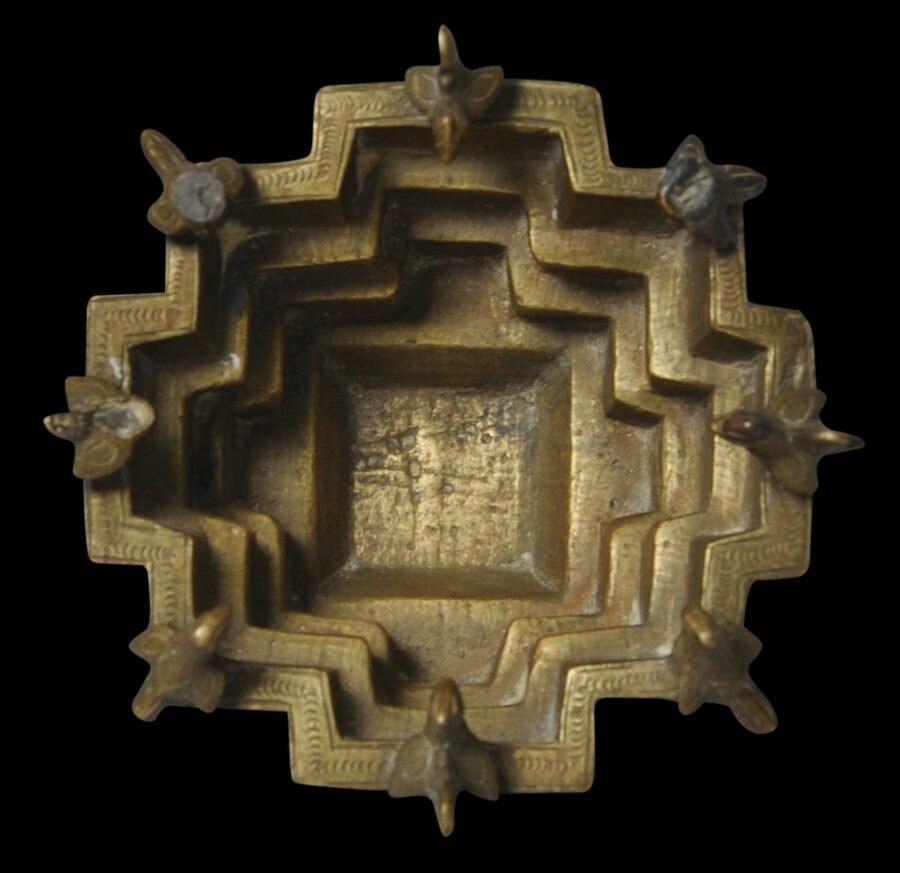This very unusual vessel of stepped sides that taper is based on a sri yantra and undoubtedly out had tantric ritual purposes. Possibly it was filled with water which then took on some of the tantric properties imparted from the vessel.
The rim of the vessel is engraved and further decorated with small solid-cast birds (some partly deficient.)
The vessel sits on a low, slightly domed foot engraved with a lotus petal band.
Sri yantras traditionally have been used in Hindu India and Nepal as part of the puja (prayer) ritual and also as talismanic or protective devices. The form is steeped with meaning. The sri yantra traditionally is formed by nine interlocking triangles that surround and radiate out from a central point (bindu). The stacking of the triangles gives allusions to the lingam-yoni and also to Mount Meru, the mythical abode of the gods. Nine is a magical, talismanic number in Hinduism and Buddhism and so the sri yantra also is known as the Navayoni Chakra (‘nav’ comes from the Sanskrit for ‘nine’). The form gives rise to the mandala in Hindu and Buddhist art. In this regard, the form of the vessel here is not unlike that of the pre-Islamic, Buddhist Borobodor stupa monument of central Java, which has the form of a large mandala.
Overall, this is a rare item. We are not aware of any in this form that have been published.
References
Brauen, M., et al., Mandala: Sacred Circle in Tibetan Buddhism, Arnoldsche/Rubin Museum of Art, 2009.
Rawson, P., Tantra, Arts Council of Great Britain, 1971.




